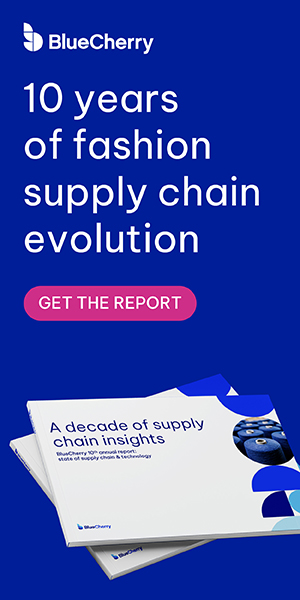
Kathleen DesMarteau, Responsible Research & Writing LLC, is a writer and researcher specializing in business technology and manufacturing trends. She covers fashion industry IT, advanced materials and supply chain issues.
Topics
Women’s History Month: Reflections on Female Advances in Fashion

As they have for centuries, women are making things happen in the fashion, retail, apparel manufacturing and consumer goods industries—from the plant floor to the C-suite.
In 1900, women organized to form the International Ladies’ Garment Workers’ Union (ILGWU), advocating for safer workplace standards and changing the course of U.S. labor relations. In the design realm, Coco Chanel, Vera Wang, Donna Karan, Miuccia Prada, Sara Blakely and Tory Burch are among top female designers who have steered their own destinies, delighted millions with their products and driven strong global sales.
In retailing, the majority of entry-level positions are held by women, but there also are a growing number of female leaders. Prominent examples include TJX executive board chair Carol Meyrowitz, Gap Inc. CEO Sonia Syngal, SPANX’s CEO Sara Blakely and Kohl’s CEO Michelle Gass.
Yet, challenges remain. A 2018 report by McKinsey, “Shattering the glass runway,” found that 50 percent of leading women’s wear labels are designed by women, but of those in charge at top brands, females make up only 14 percent. On the factory floor, thousands of female workers, outnumbering their male colleagues, have died in workplace disasters, past and present. New York’s Triangle Shirtwaist Factory fire of 1911 killed predominantly young immigrant women. Over a century later, womankind again suffered the greatest impact, making up the majority of the 1,100+ killed and 2,500+ injured in the 2013 Rana Plaza collapse in Bangladesh.
How can the industry keep making progress in the right direction? We checked in with CGS Vice President of Manufacturing Systems Mihaela Coapsi, herself a long-time apparel manufacturing leader, to discuss some key issues.
Women and the Connected Organization
Coapsi said she believes women are the connective glue holding together families, businesses and broader society. “Women excel at linking everything together,” she says. “Women have a sparkle, passion and love that goes into everything we do. For the future, let’s keep the sparkle. Let’s encourage the glue that puts that sparkle on to stay forever.”
Companies can cultivate female associates and leaders by creating more flexible workplaces with family friendly policies and ensuring leadership positions held by women are more proportionate to the overall number of women in the field.
She points to findings of the McKinsey report that show women’s ambitions in the fashion industry start strong but tend to erode, in part due to lack of mentorship. “Companies should offer mentorship programs for women, providing them with an opportunity to forge meaningful professional connections and preparing them to assume top management positions,” said the McKinsey report. “One industry leader matches women with mentors from the get-go, so that female employees are supported and coached at every point in their career. Others use formal group sessions to help women hone professional skills needed for career advancement, like negotiations.”
“Women have a sparkle, passion and love that goes into everything we do. For the future, let’s keep the sparkle." – Mihaela Coapsi, VP, Manufacturing Systems, CGS
Technology as Enabler of Equality
Something women did not have in their corner in the early 1900s or even early 2000s is entirely cloud-based business technology, including next-generation production management solutions. These technologies, such as CGS BlueCherry® Shop Floor Control (SFC), offer real-time access to information on earnings, productivity and production instructions, right at the operator’s workstation.
As the saying goes, information is power. “They have this experience to control their own destinies,” Coapsi says. “The majority of workers on the fashion industry manufacturing floor are women, as are those working as quality control leaders, supervisors and production plan managers. Having the information from this system available to them, displayed on their workstation screen or tablet, is a huge motivational factor for operators and improves everyone’s ability to make decisions, take action and improve results.”
Operators see their pacing and progress toward goals and real-time earnings based on performance. They also have easy access to instructions and construction details, sometimes including videos of how to perform various operations.
SFC technology also gives manufacturers and potentially their customers and supply chain partners greater visibility to production status, capacity, wages and incentive payroll programs, helping to ensure transparency to not only order status, but also fair pay practices.
Other fashion supply chain solutions improve work flexibility. This flexibility helps both women and men to manage work-life balance, which is especially important when they are the family’s primary caregivers. For example, with integrated ERP and PLM solutions hosted in the cloud and accessible on mobile devices, both women and male workers can practically do their jobs from anywhere, anytime. In the past, global collaboration on fashion collections required long office hours, calling and faxing between hemispheres, and grueling travel.
Today, that same interaction and process flow can take place digitally, thanks to solutions such as BlueCherry Next™ PLM. Business travel and in-person collaboration can be saved for the most important projects, shows, planning and relationship-building opportunities. Additionally, with cloud-based business intelligence (BI) solutions, dashboard views of key performance indicators are just a screen tap away at any time.
3D and eCommerce technologies also are lowering barriers to entry and opening opportunities for women entrepreneurs to design, source and sell products. With 3D design and product development solutions, samples can be created and approved without sewing machinery, raw materials procurement and multiple international shipments of physical sample iterations. With eCommerce platforms, a designer or business entrepreneur can launch a brand and build sales with much less financing than in yesteryear.
But what excites Coapsi most is how technology gives women, and all workers, the speed to get things done—and get on to the next challenge and opportunity. “It speeds up processes and makes work easier, and at the end of the day, that brings a lot of job satisfaction.”
CGS welcomes readers to contact us to share stories of female empowerment, leadership and contributions within your business. We also invite you to download our white paper, 4 Steps to Digitally Transform Your Factory Floor, to learn more about how SFC can motivate and strengthen your workforce and help ensure fair, competitive wages and incentives for production operators in your supply chain.

Kathleen DesMarteau, Responsible Research & Writing LLC, is a writer and researcher specializing in business technology and manufacturing trends. She covers fashion industry IT, advanced materials and supply chain issues.

